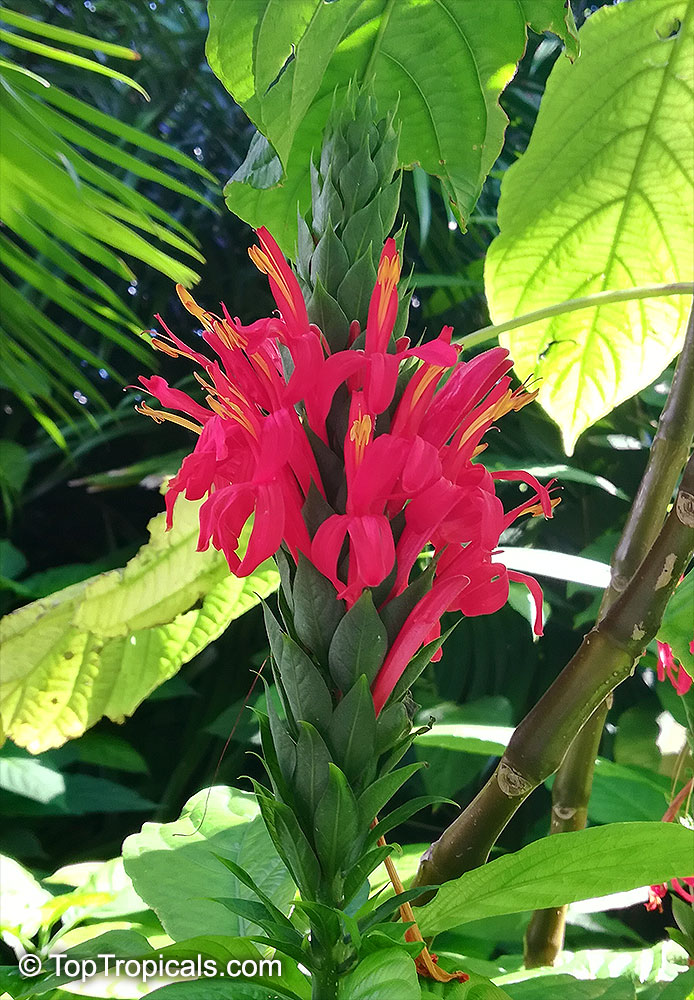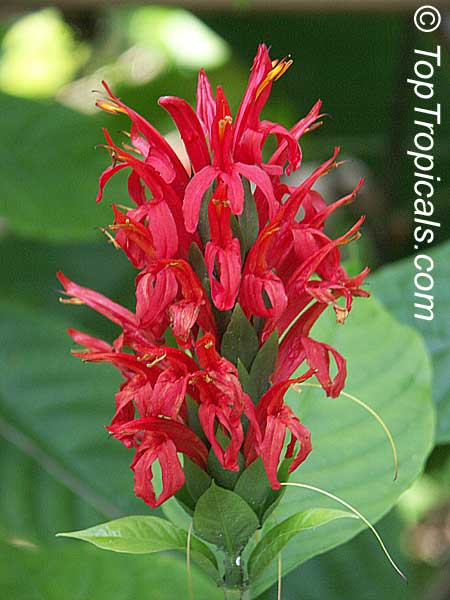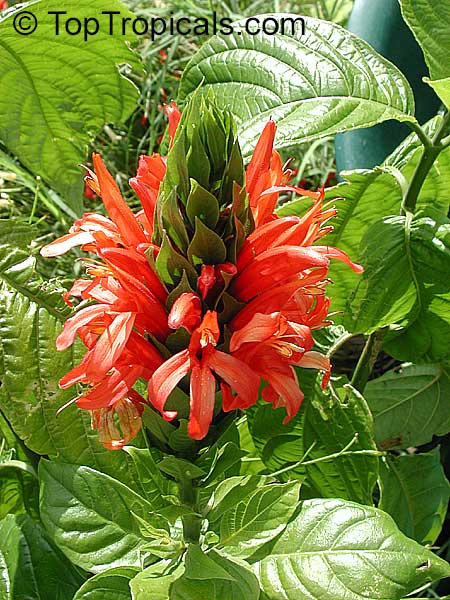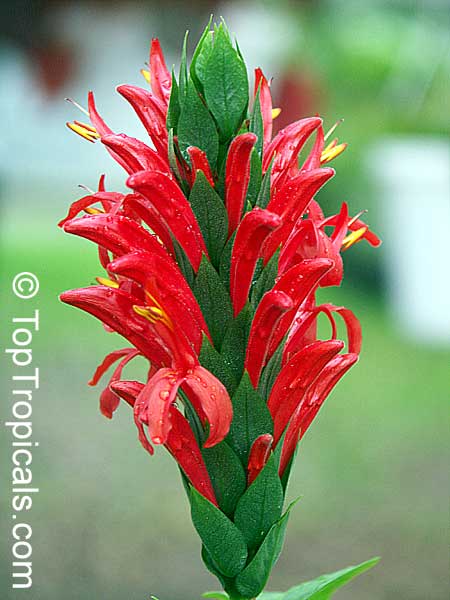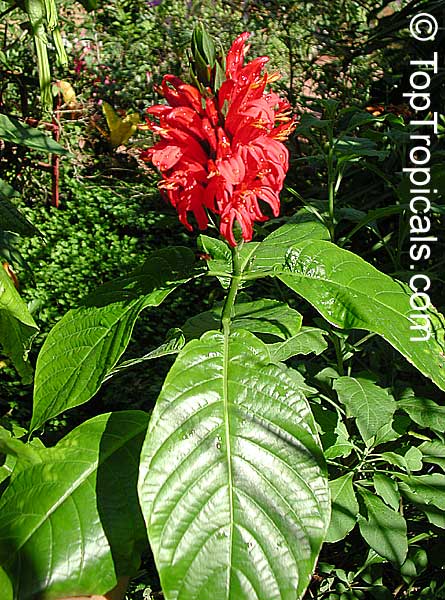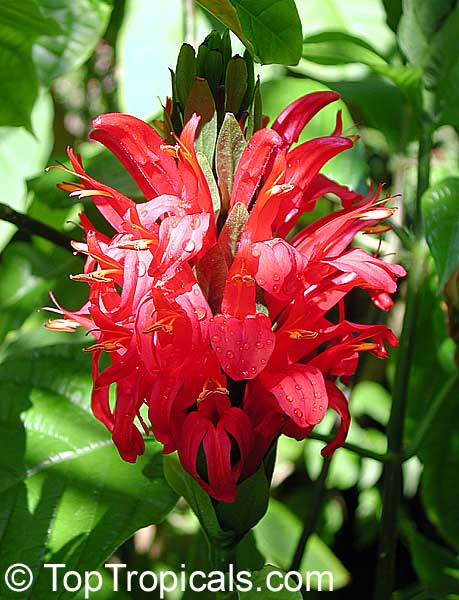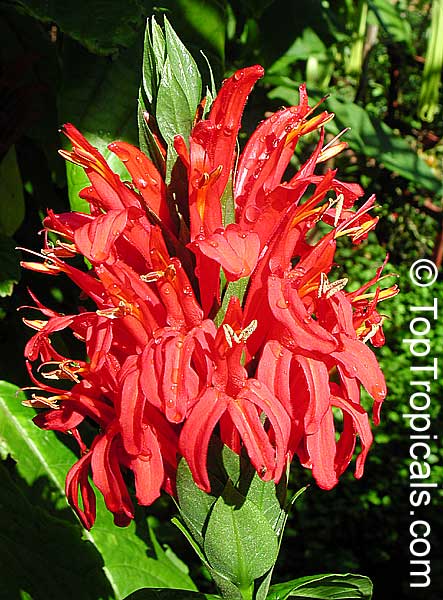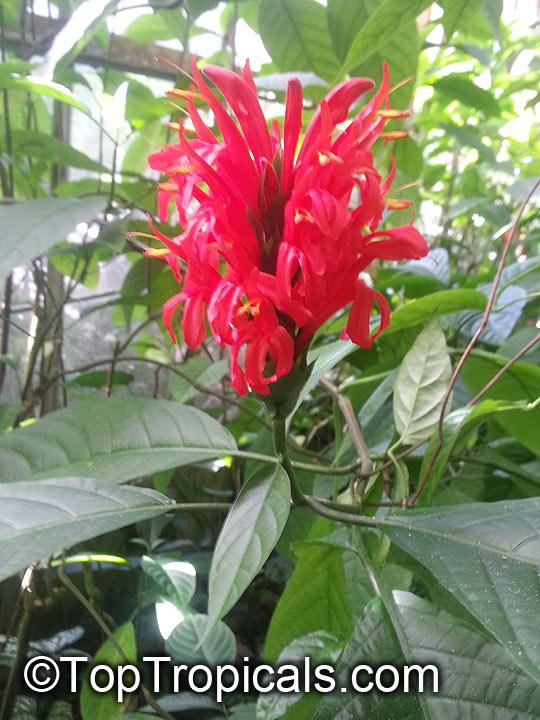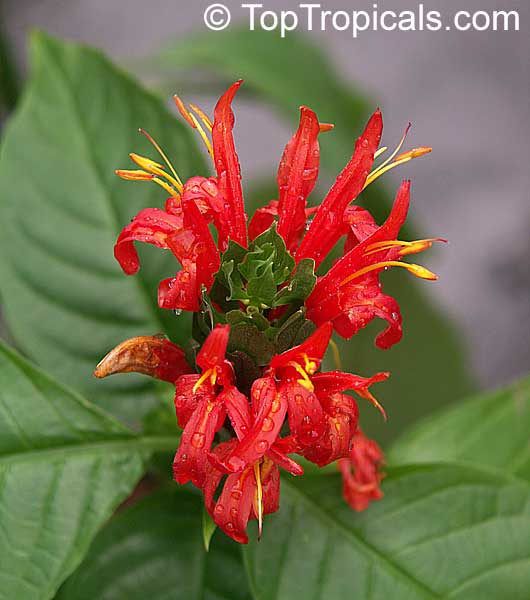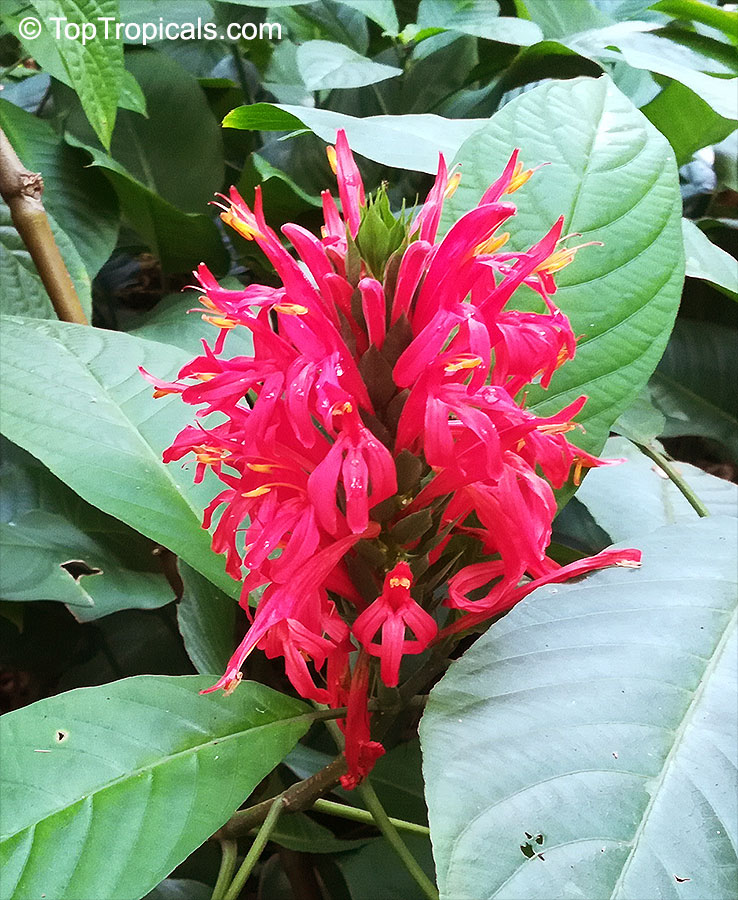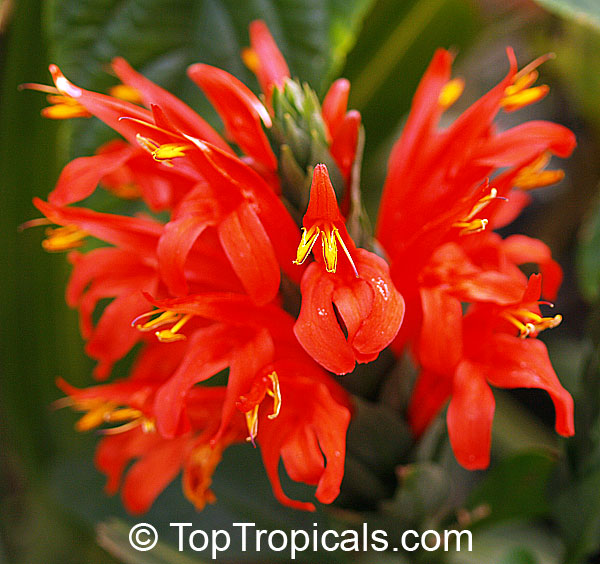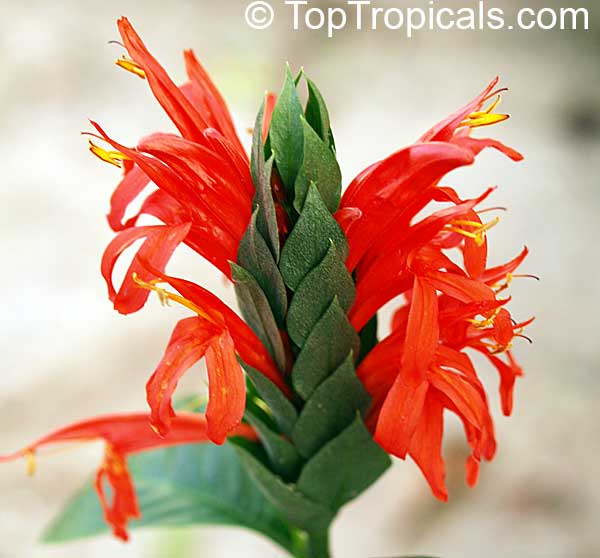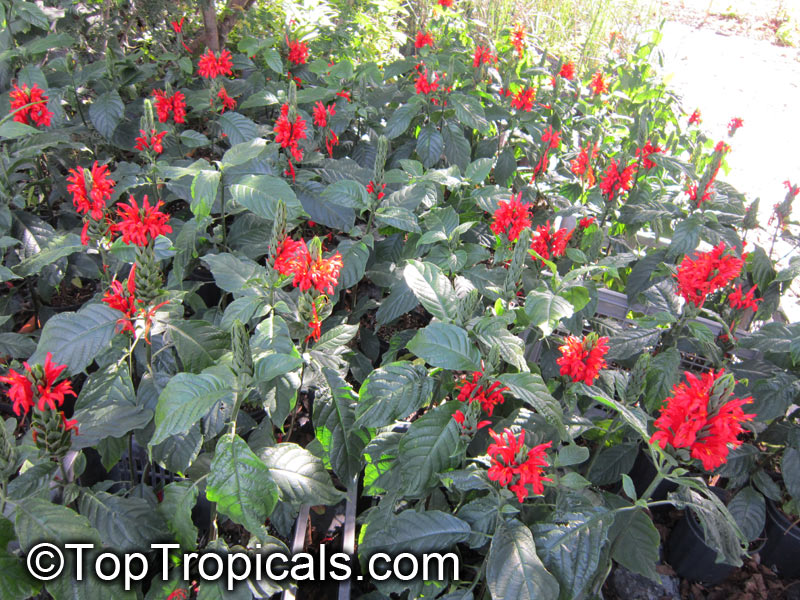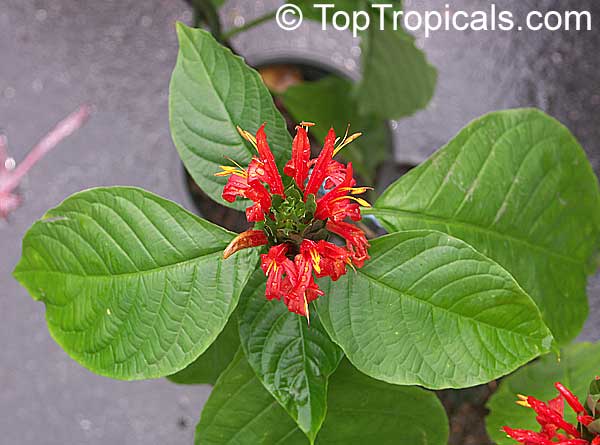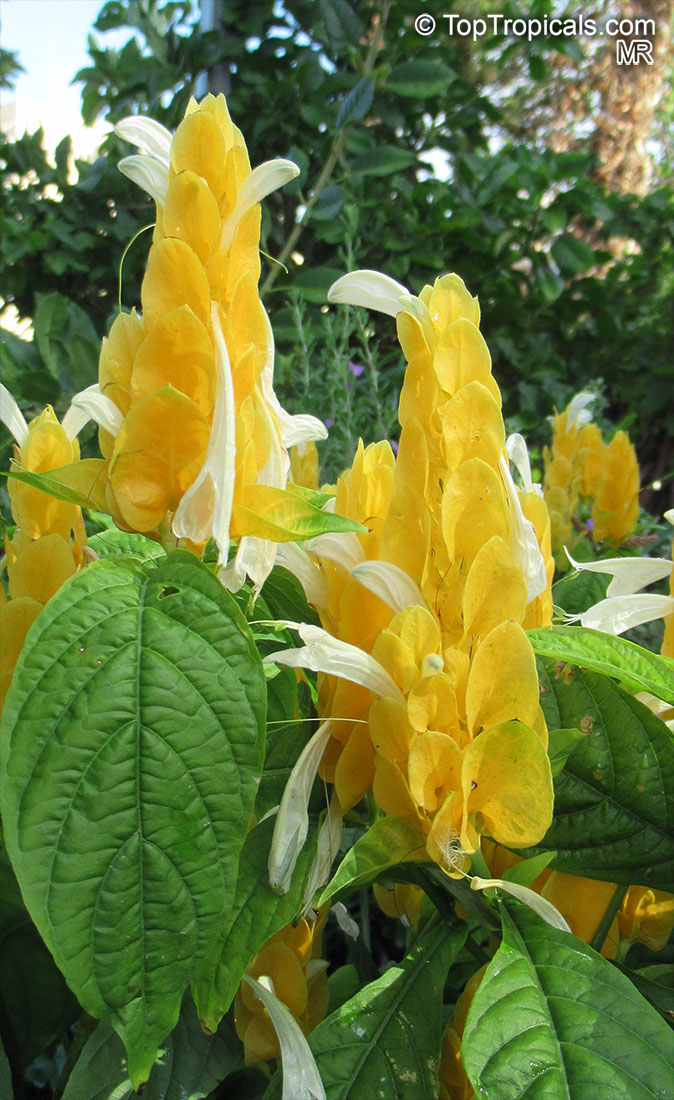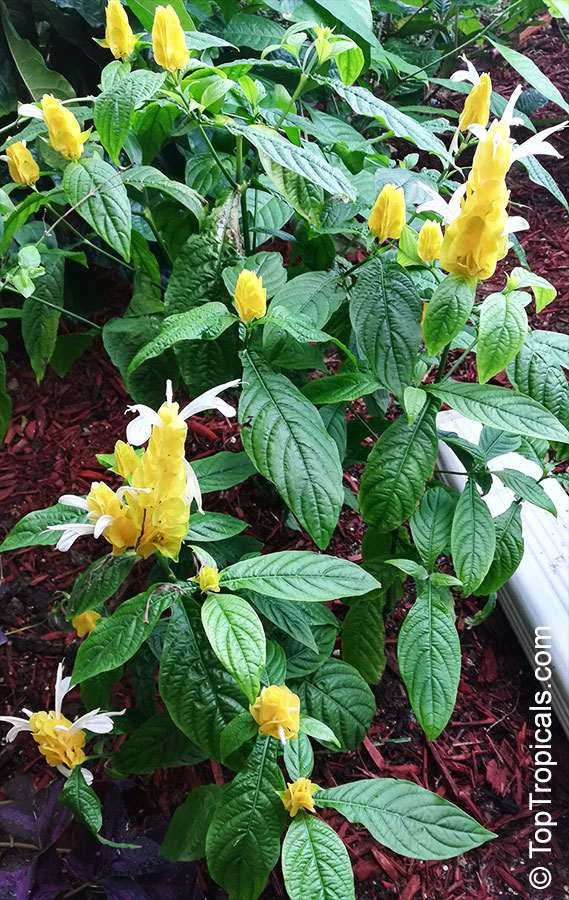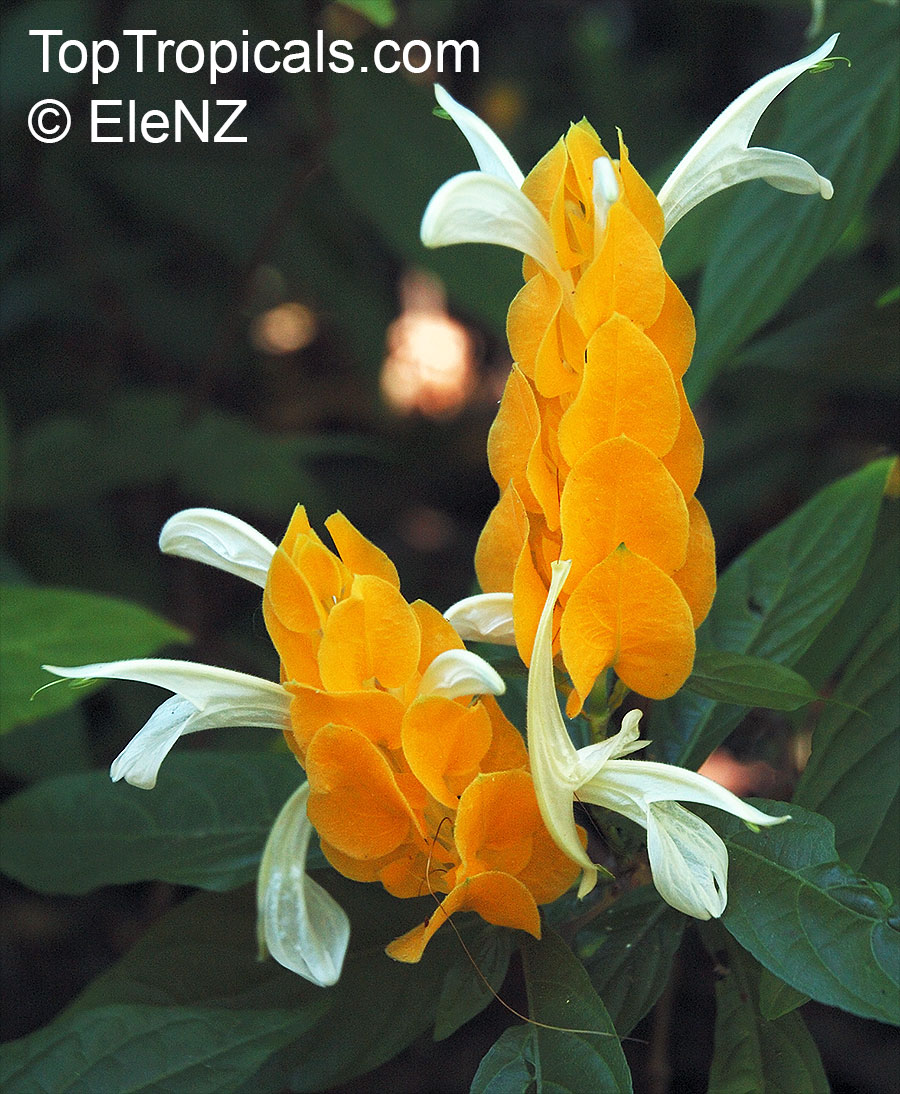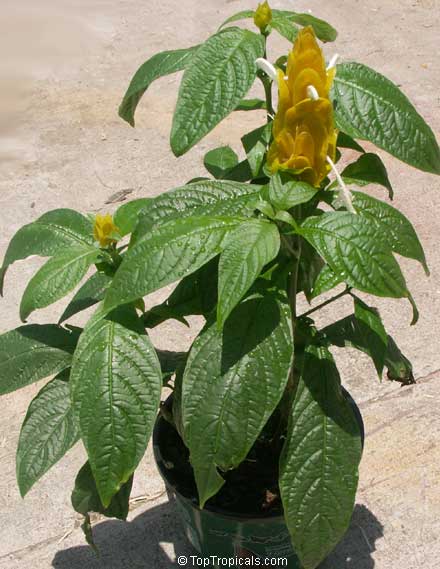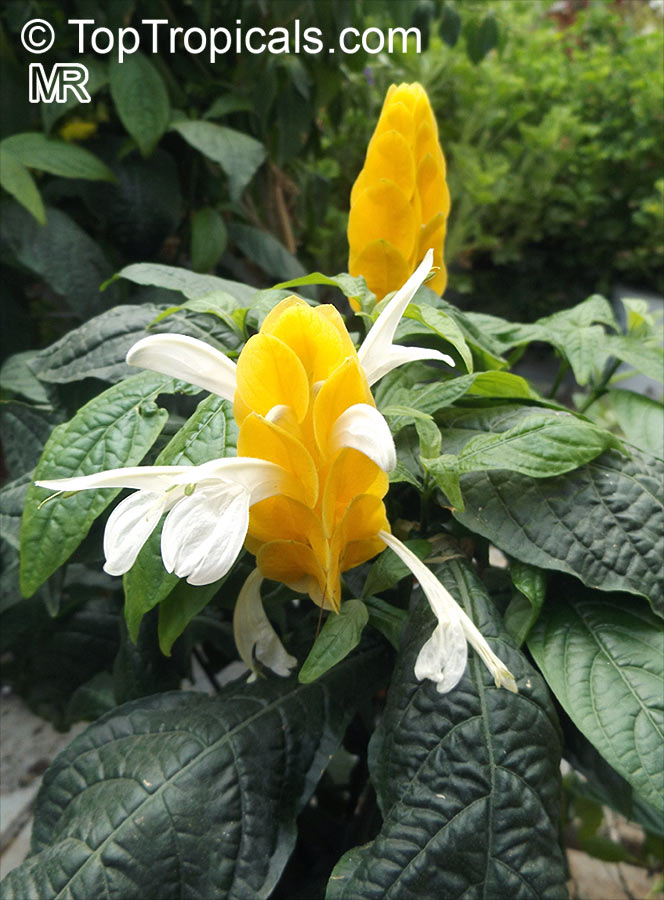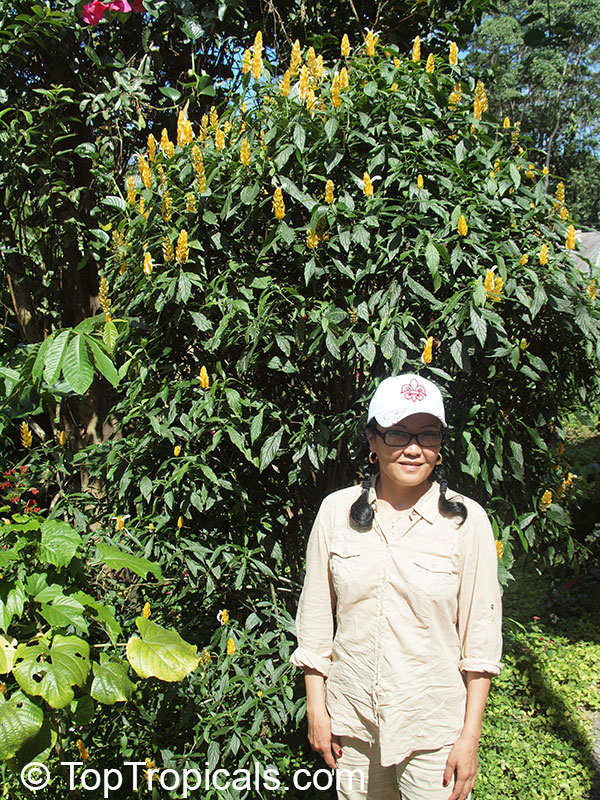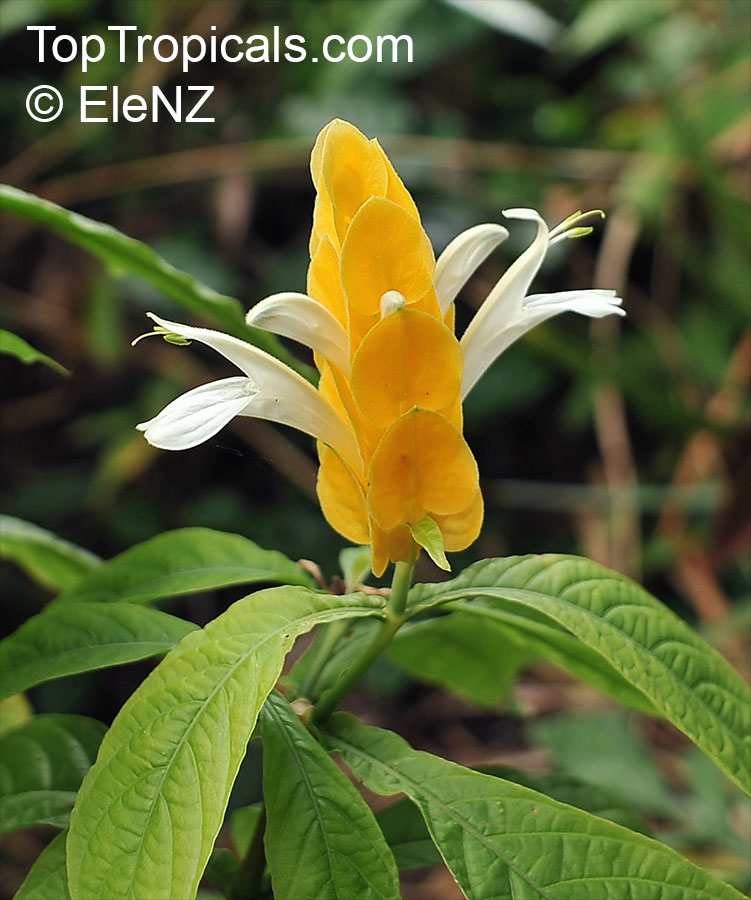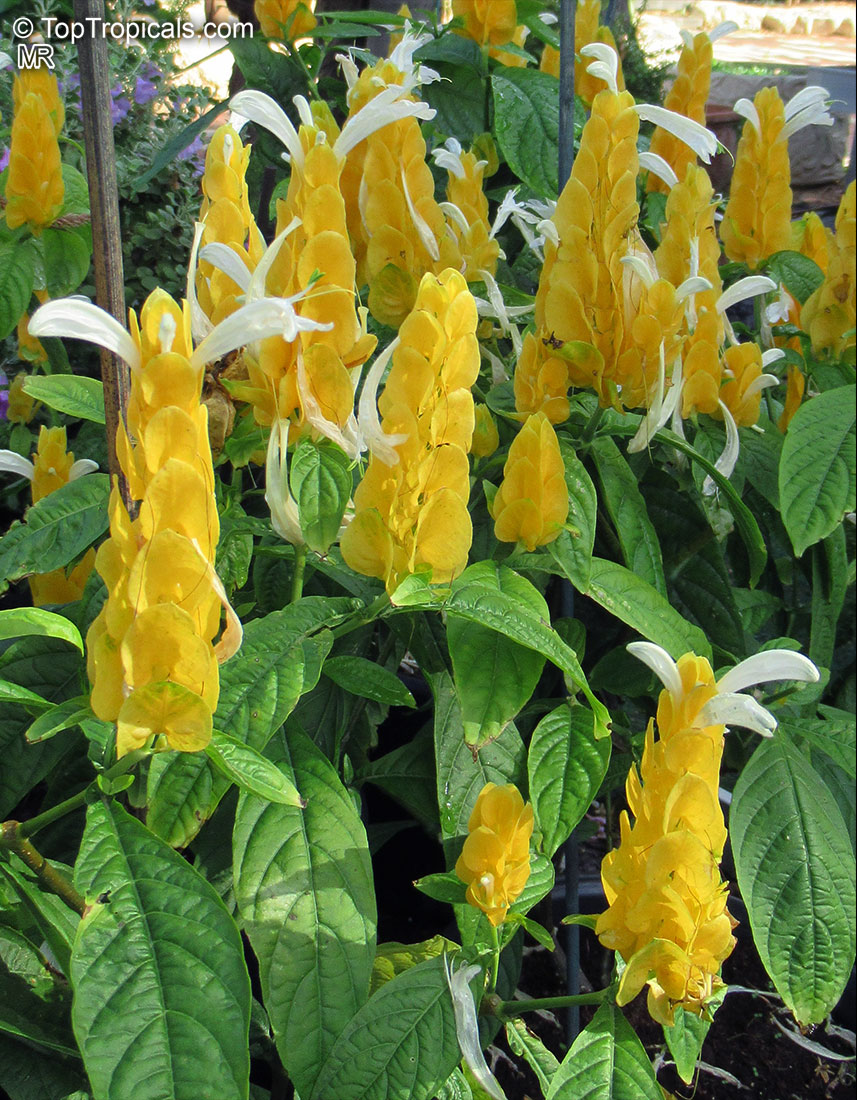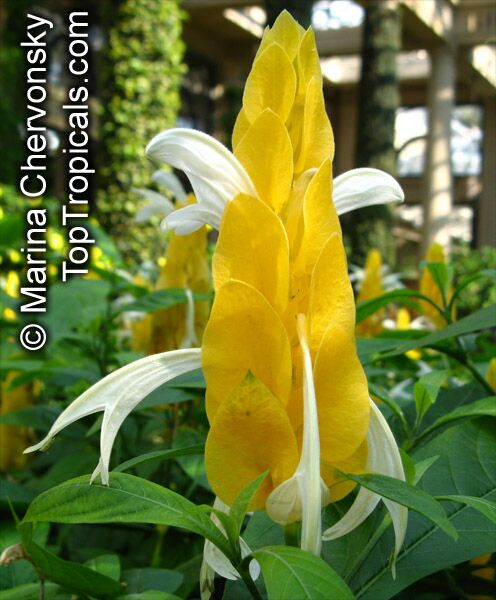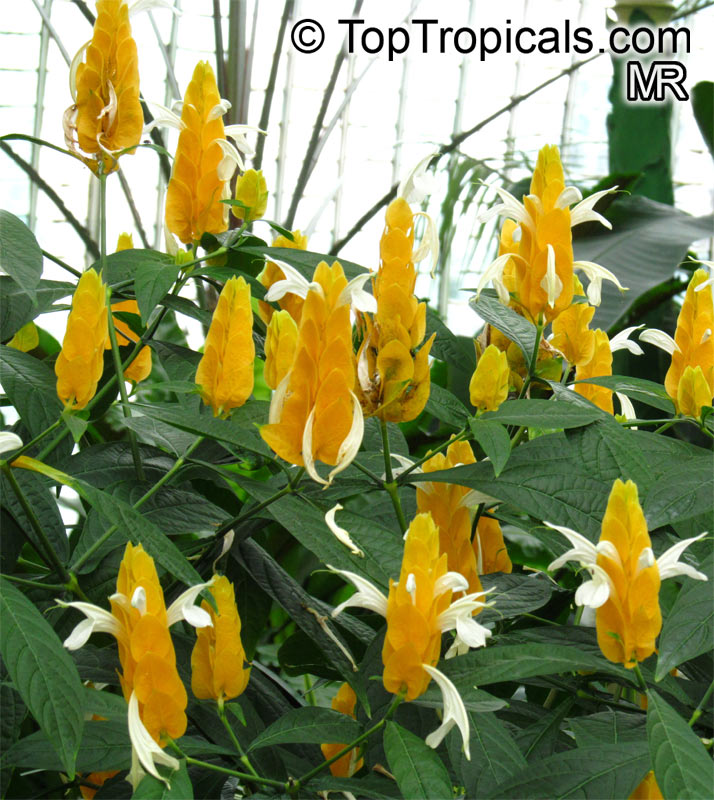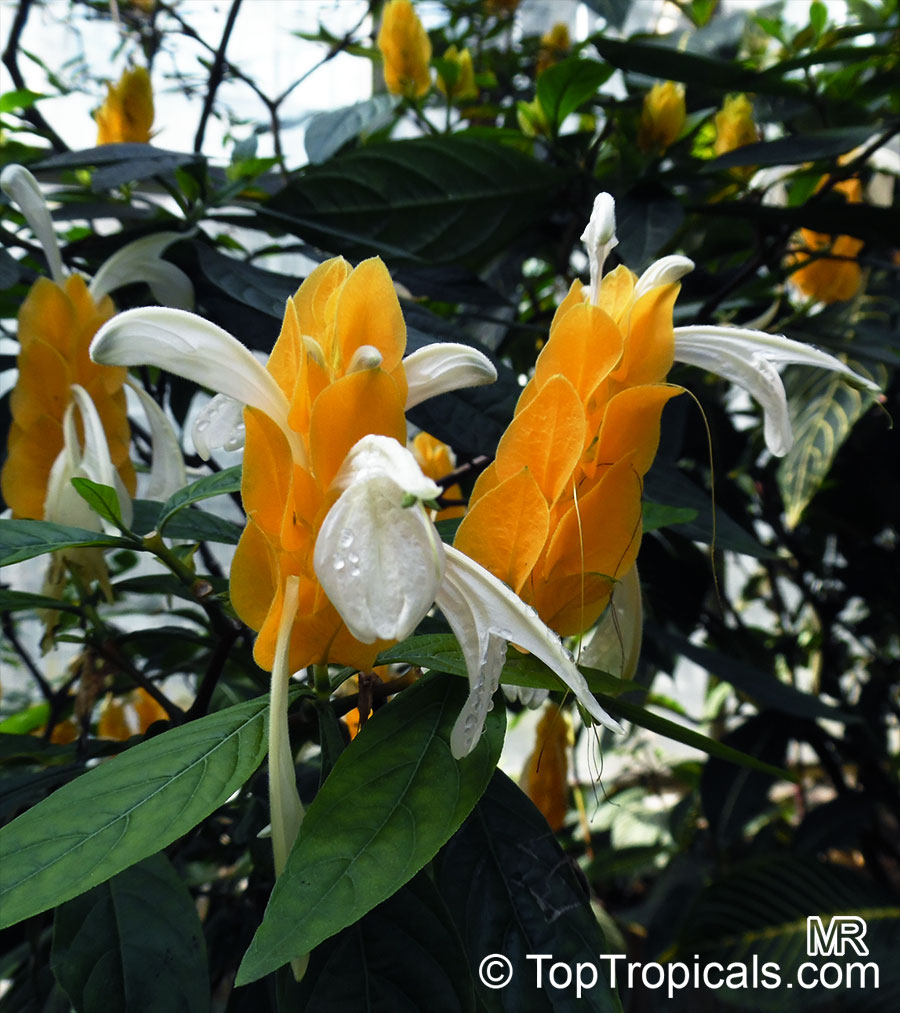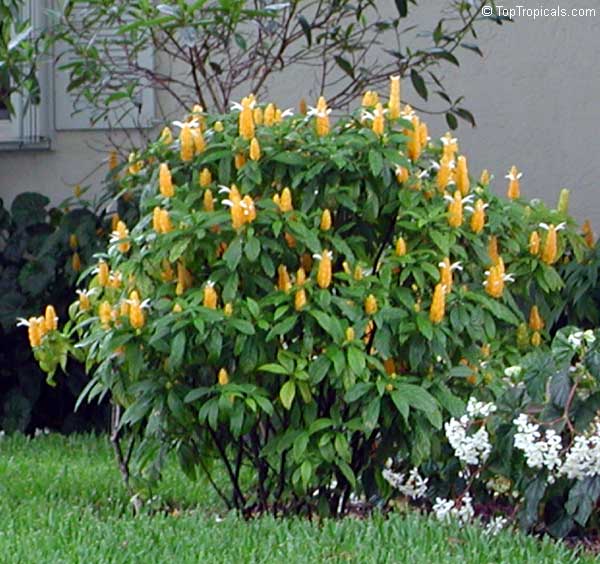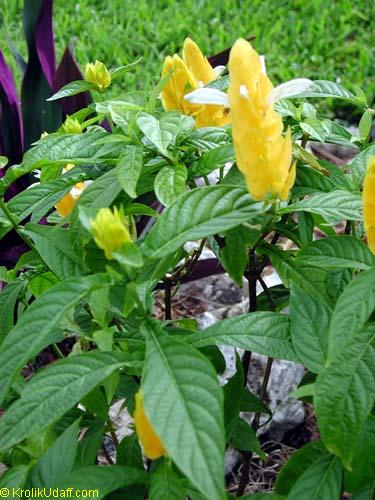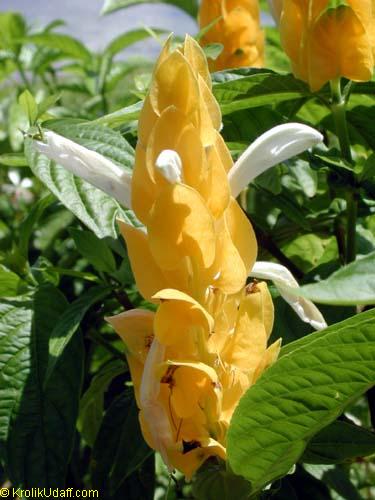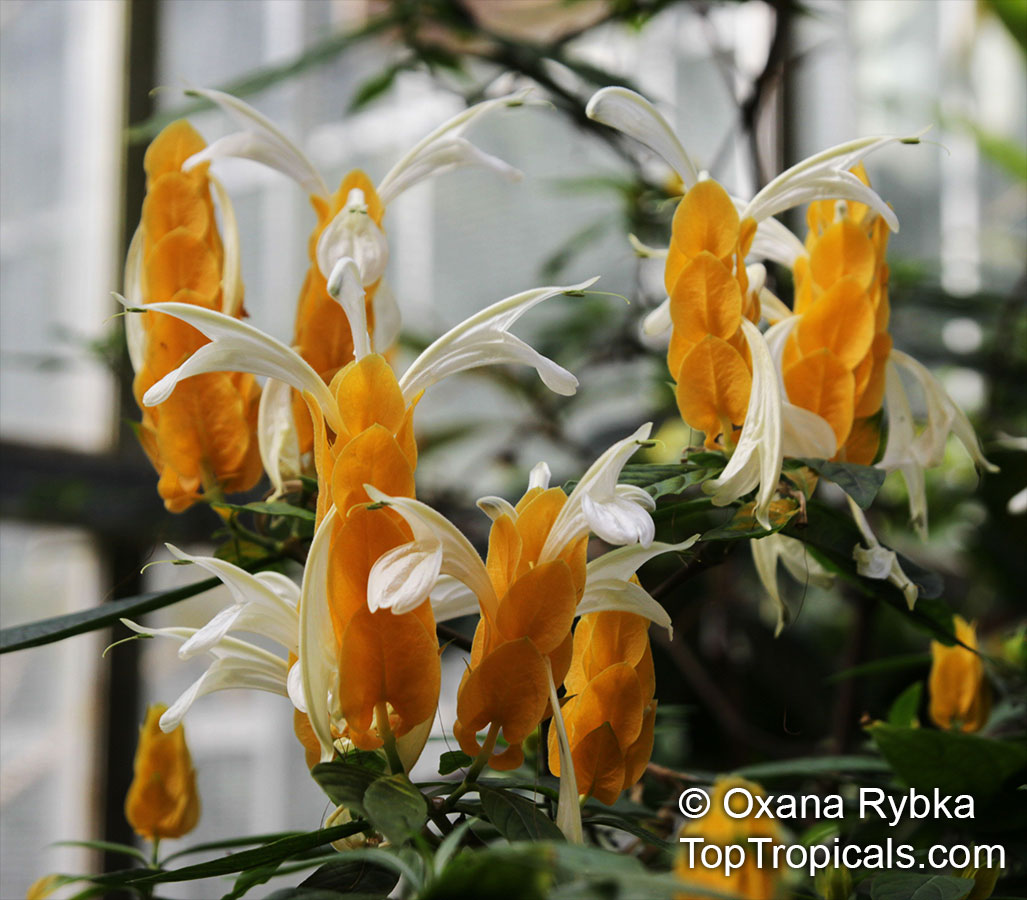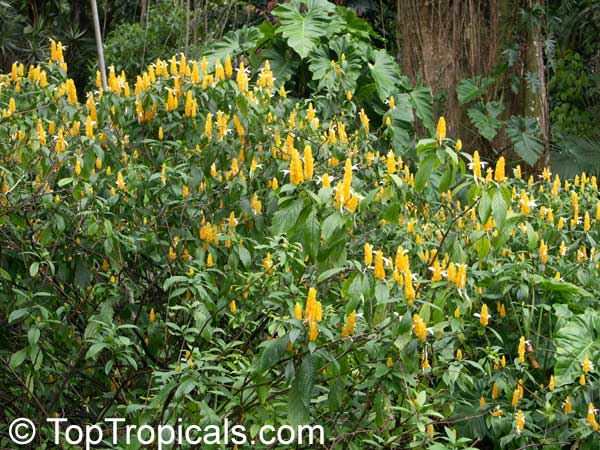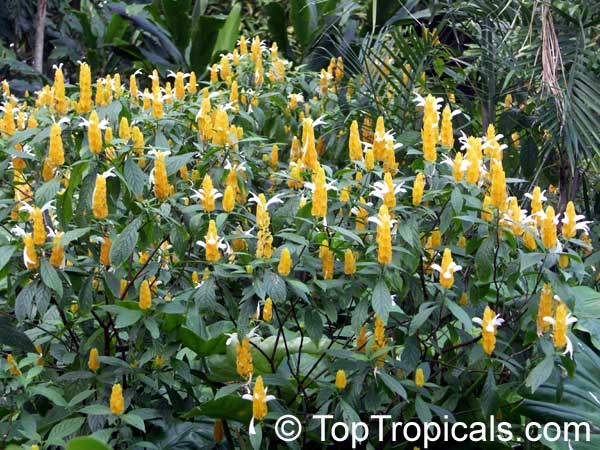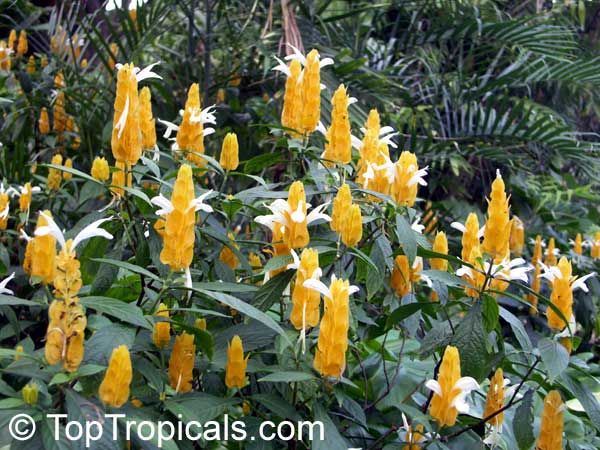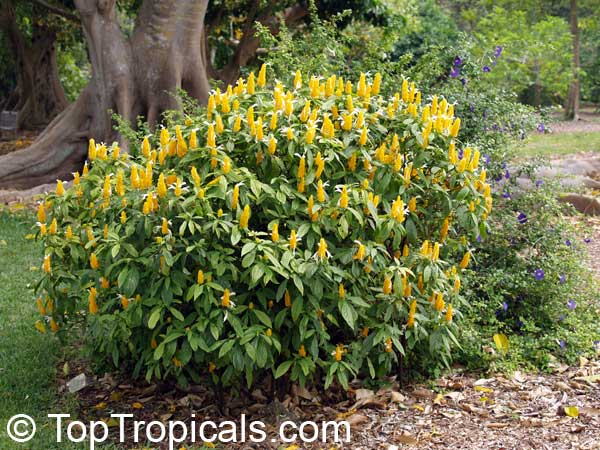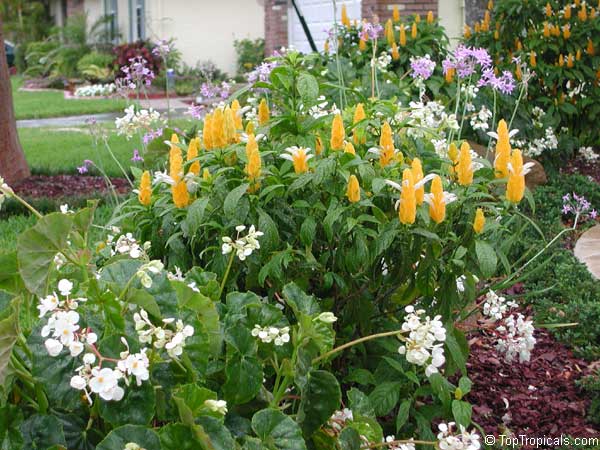Pachystachys - Plant Encyclopedia Results
Top Tropicals Plant Encyclopedia
| Number of plants found: 2 |
Botanical names: Pachystachys coccinea, Pachystachys spicata, Justicia coccinea, Jacobinia coccinea
Common name: Cardinals Guard
Family: Acanthaceae
Origin: Northern South America, West Indies








If your garden needs a pop of color, Cardinals Guard is ready to take the spotlight! With its bold, scarlet-red blooms perched atop green cones, this evergreen perennial looks like it's wearing a crown. Striking Christmas-red flowers emerge from a green cone and bloom most of the year, adding vibrant color and a festive, tropical feel to any space. Its upright, multi-stemmed growth with lush foliage attracts hummingbirds, butterflies, and other pollinators. For best results, give it morning sun and afternoon shade, and trim stems to prevent legginess and encourage fresh growth. Cardinals Guard thrives in Southern gardens and large containers, making it a perfect choice for bringing a festive flair to your outdoor space.
Recommended Fertilizer: SUNSHINE Megaflor - Bloom Nutrition Booster
Botanical name: Pachystachys lutea
Common names: Yellow Shrimp Plant, Golden Shrimp Plant, Lollipop Plant, Candle Plant
Family: Acanthaceae
Origin: American tropics








In an ideal environment, the Pachystachys lutea (Yellow Shrimp Plant) will attract all sorts of beautiful butterflies and hummingbirds. Capable of growing in a variety of soils, this small plant loves full sun but can also cope with shades and semi-shade. Moderate watering is recommended but it can also tolerate short periods of drought during the summer.
In regions with cold climates, it is possible to successfully grow the Yellow Shrimp Plant in a pot, as long as it is brought inside during the winter. The mature plant can survive short periods of cold hardiness up to 30ËšF and is usually classified within USDA Zone 9-12.
The attractive appearance of the Yellow Shrimp Plant makes it an eye-catching addition to any garden, terrace or balcony. The yellow and orange bracts and white and off-white flowers will be sure to bring vibrancy and life to any outdoor space.
Recommended Fertilizer: SUNSHINE Megaflor - Bloom Nutrition Booster
Use link to repeat this search:
https://toptropicals.com/cgi-bin/garden_catalog/cat.cgi?find=Pachystachys&search_op=and&keyword_op=and&language=e&number=10
&no_change_lang=1&user=tt&sale=1&first=0
